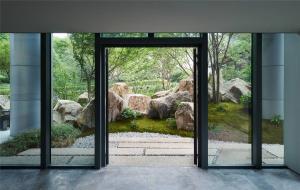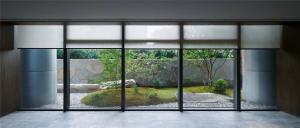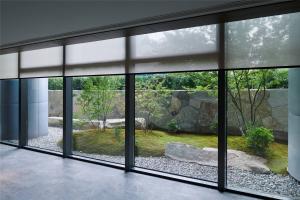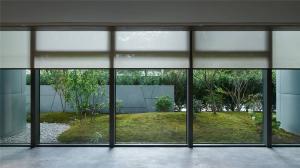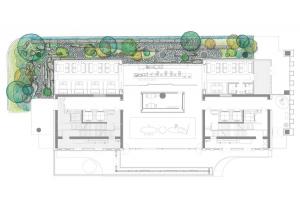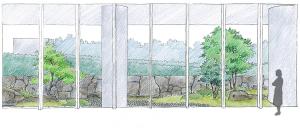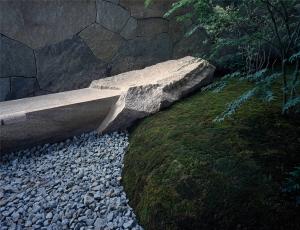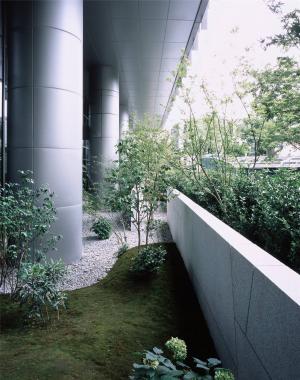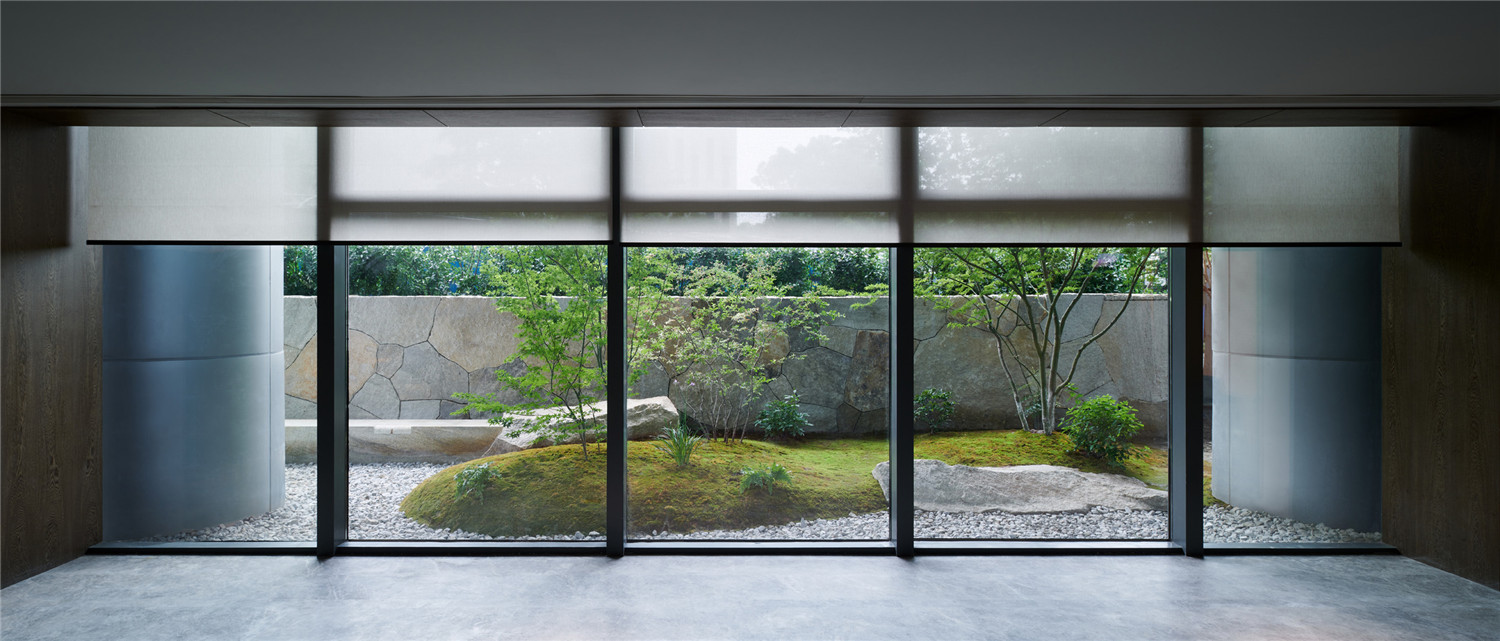
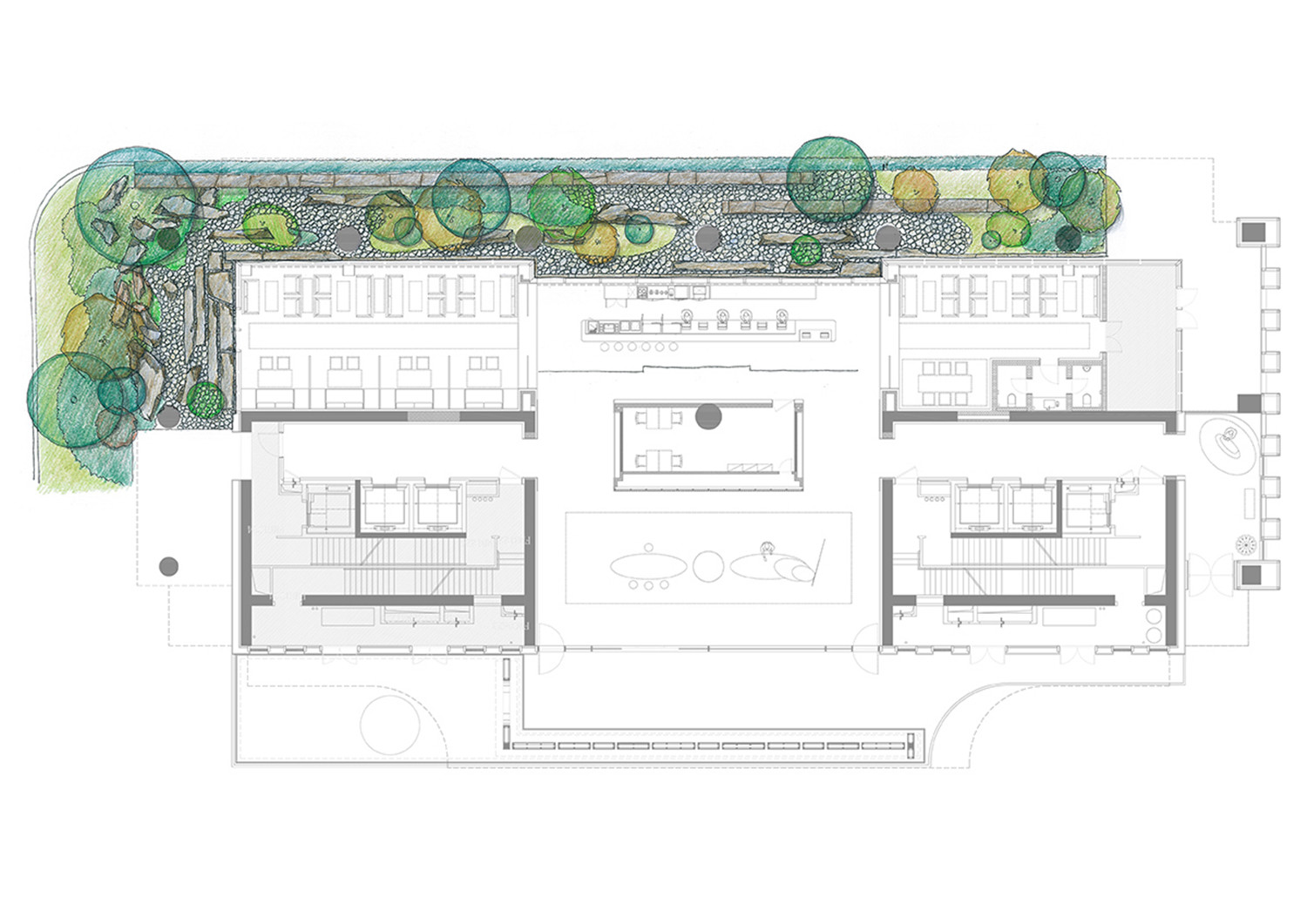
項(xiàng)目位于上海保利浦東濱江禧玥酒店一層��,人來(lái)人往的接待處兩側(cè)�,鋪陳開(kāi)安靜茶室��,組成總約50米的長(zhǎng)廊�����,落地玻璃營(yíng)造出連續(xù)性框景的效果���,緩步其中���,所見(jiàn)連成一幅長(zhǎng)卷��。線性視覺(jué)有助于營(yíng)造氛圍�����,但場(chǎng)地狹長(zhǎng)的特點(diǎn)令視角過(guò)窄����,設(shè)計(jì)師需要解決現(xiàn)有條件造成的問(wèn)題���,同時(shí)滿足空間造型感受�。不僅僅是視覺(jué)上引發(fā)共鳴���,我們希望能在這處停頓、休憩區(qū)域���,營(yíng)造出恰如其分的空間氛圍��,使風(fēng)塵仆仆的來(lái)賓進(jìn)入后����,心情發(fā)生些許改變。
Xinzhao Garden is located on the first floor of Joya Hotel in Lujiazui, Shanghai. It serves as the backdrop of the reception area and tea room measuring approximately 50 meters long. The glass windows frame the garden into a continuous long scroll as guests stroll from one side to another. The linearity of the site is suitable for building a unique atmosphere, but the narrowness nature of the site results in very limited perspectives; designers need to tackle the existing challenges and fulfill the space modeling experience at the same time. We hope to create an appropriate atmosphere for the guests while also stimulating their visual senses, changing their mood slightly as they enter the property.

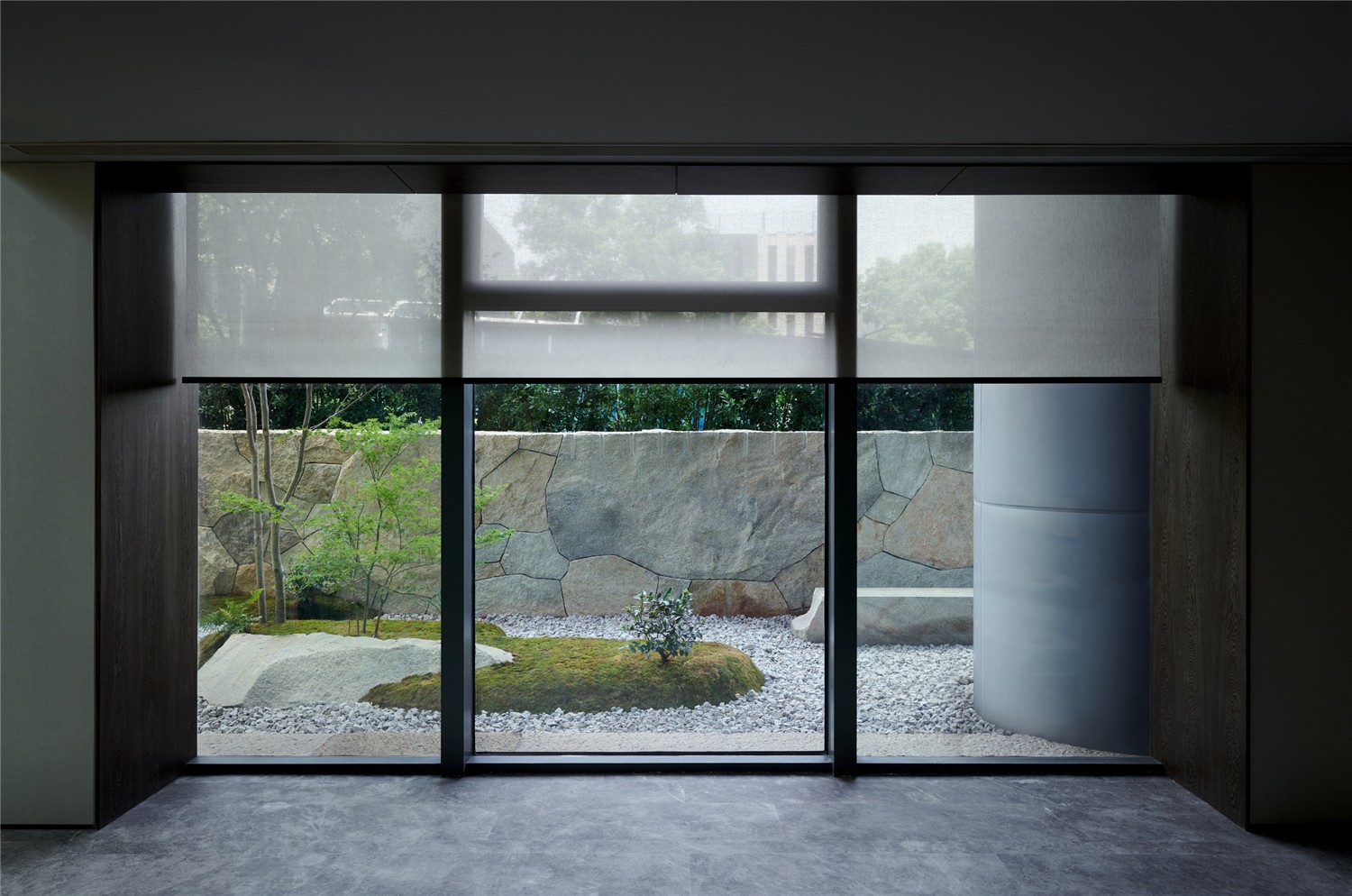
↑通過(guò)黃銹石石組營(yíng)造空間想象感�。The imagination of the space is created through yellow-rust stone stone groups.
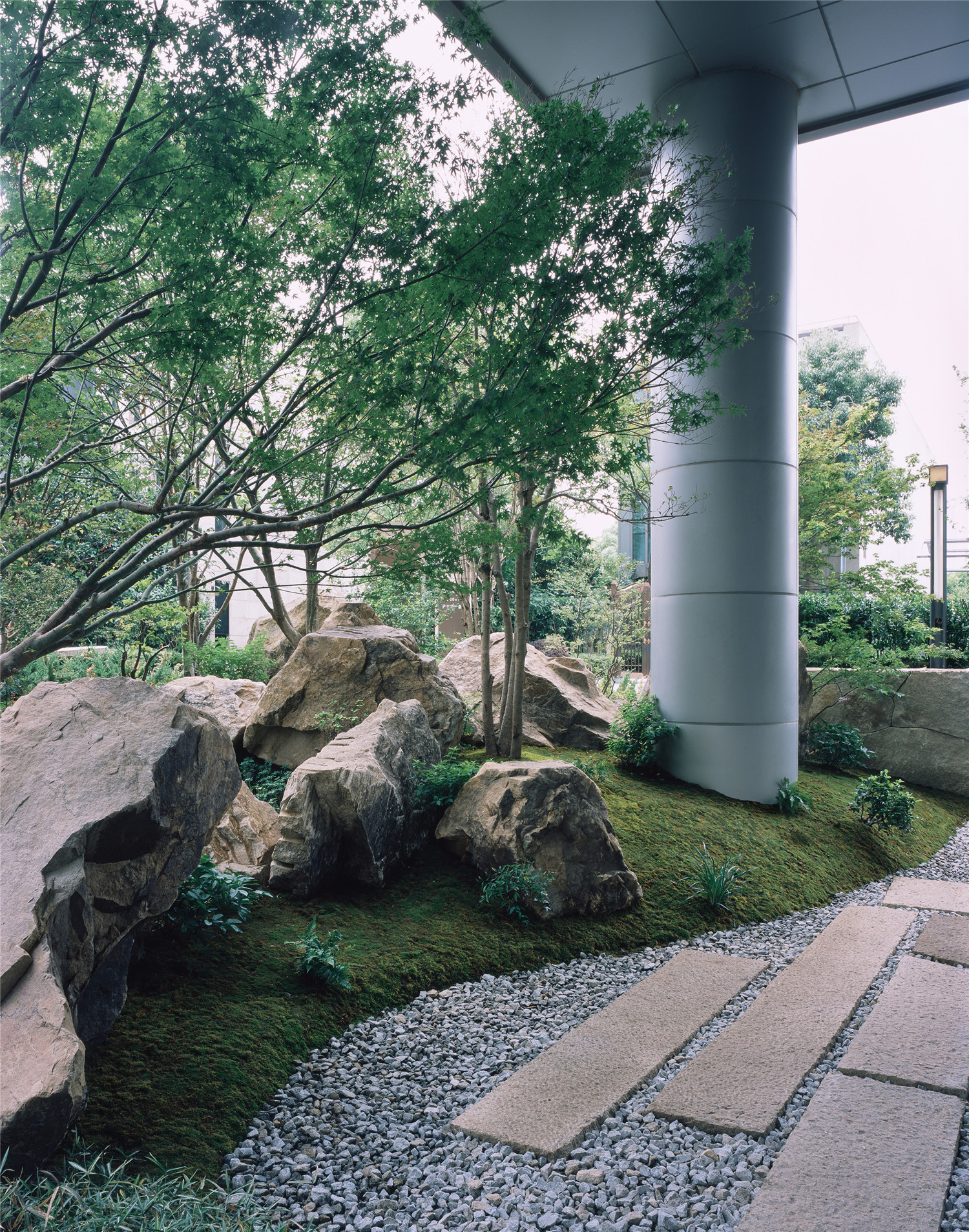
↑心照庭有兩處位置可站立靜觀,南側(cè)休憩平臺(tái)為其一�。Within Xinzhao Garden, there are two locations for observation, one of them being the viewing platform located at the southern end of the garden.
進(jìn)入空間能感受到適宜的光線,設(shè)計(jì)師有意識(shí)地借用景觀����,影響人們對(duì)室內(nèi)光線的感知。最南側(cè)整體氛圍陰翳����,多塊巨大黃銹石組成的山體,最大限度完成場(chǎng)地外對(duì)車(chē)道的遮擋�����。大部分石頭向前傾倒����,營(yíng)造向前的壓迫感,給人以身處山腳下的感覺(jué)�。也隔絕了分散視線的其他可能,向后望似無(wú)盡頭���,一再向外延伸����,帶來(lái)更多想象空間。
The designer consciously utilizes the landscape to create adequate lighting that can be felt as one enters the reception area, influencing how light behaves and feels indoor. The southern end consists of large yellow-rust stone stone groups resembling a mountain that obstructs the view to the driveway to the greatest extent, creating a somber atmosphere. Most of the stones are tilted towards indoor, creating an oppressing sensation as if one is at the base of a mountain. The large stone groups also obstruct possible peripheral views, creating more room for imagination as if there are endless possibilities beyond the stones.


↑設(shè)計(jì)師嘗試用園中石材�、技法,去影響室內(nèi)光線的進(jìn)入與反射���。The designer uses stones to influence how light enters the indoor and refracts.
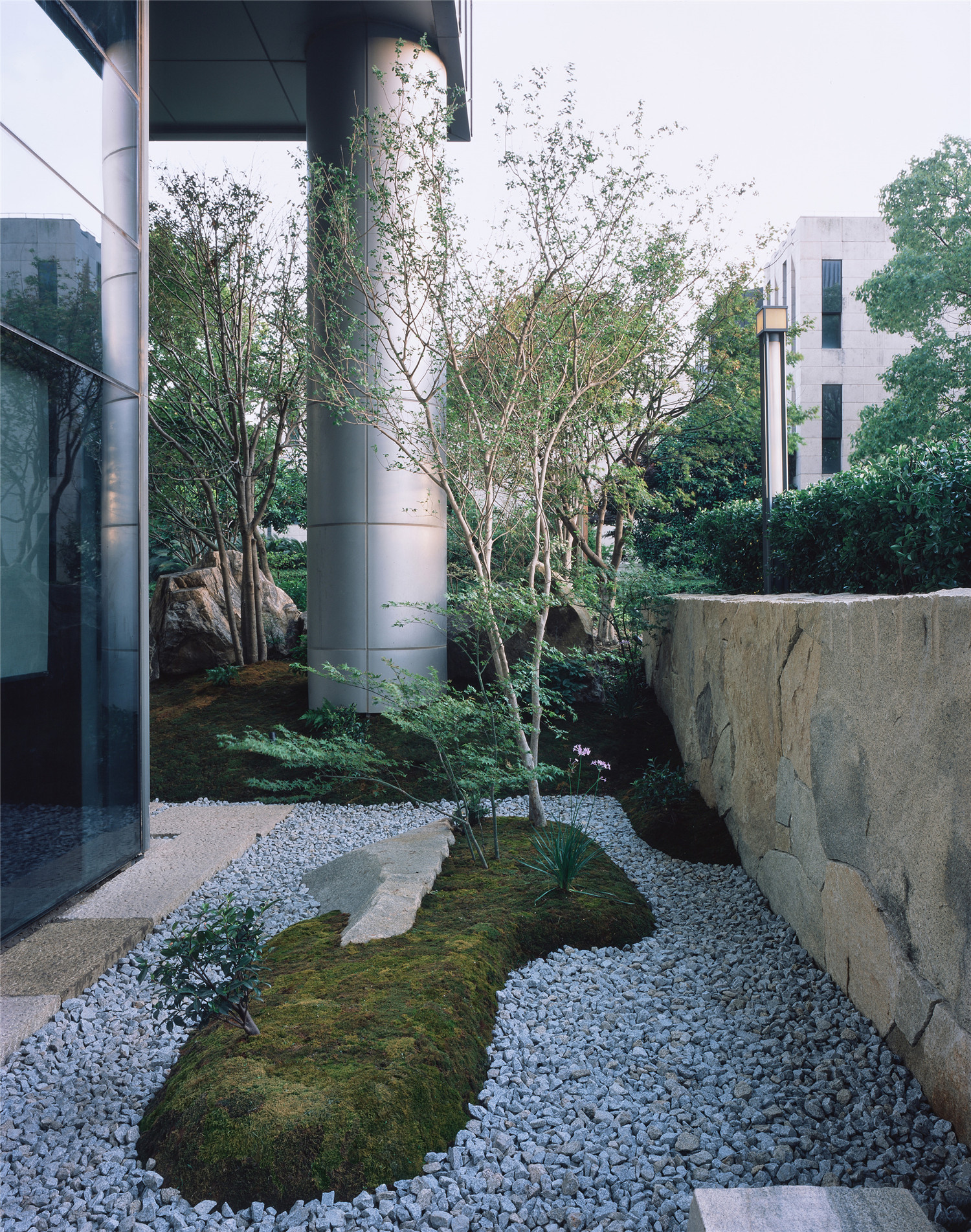
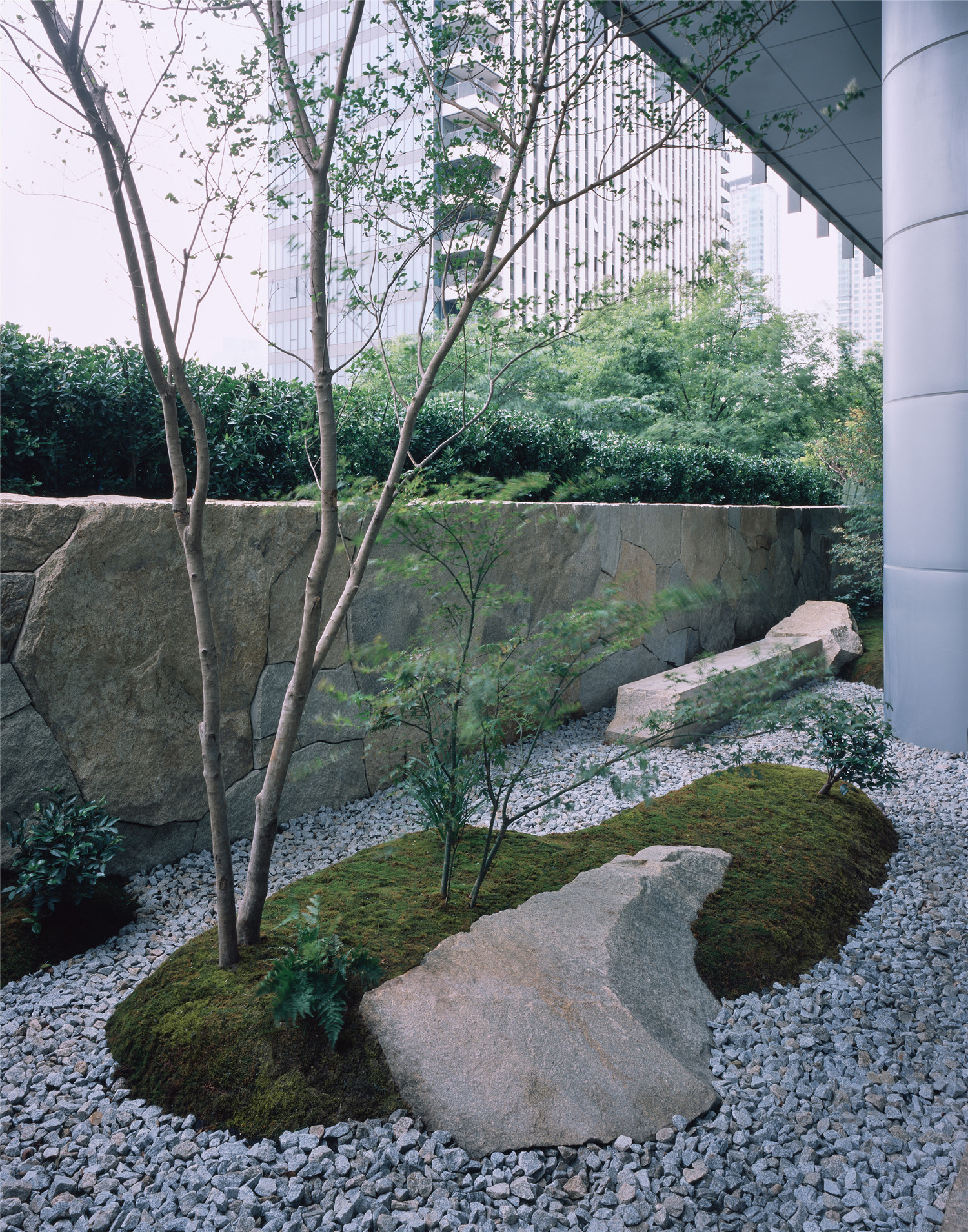
↑黃銹石亂拼石墻與石塊呼應(yīng)�����。Yellow-rust stone irregular paving stone wall echos with stone blocks.
隨著空間推進(jìn)����,可以明顯感覺(jué)到外部長(zhǎng)廊由南向北逐漸轉(zhuǎn)亮���。起初將亂拼石墻和綠籬營(yíng)造出可稍作遮擋的高度�����,逐漸石墻高度減低,黃銹石的石墻過(guò)渡至芝麻白石墻��,顏色趨于明亮�。同時(shí)選擇多桿�、飄逸輕盈的植物增加通透感��,植物交錯(cuò)種植�,將空間景深拉開(kāi)。直至自然石墻消失���,進(jìn)入灌木區(qū)域�����,通過(guò)綠植與碎石整體提亮空間��。
Light gradually brightens as space progresses from south to north. The landscape transitions from the tall yellow-rust stone stone wall with irregular patterns accompanied by taller hedgerow to brighter, lower sesame white stone stone wall. Thin-branched deciduous plants are used to increase transparency, emphasizing the contrast between foreground and background. Towards the northern end, the landscapes become dominant with shrubs and the stone wall comes to an end. The area is brightened with the predominant use of plants and gravel.
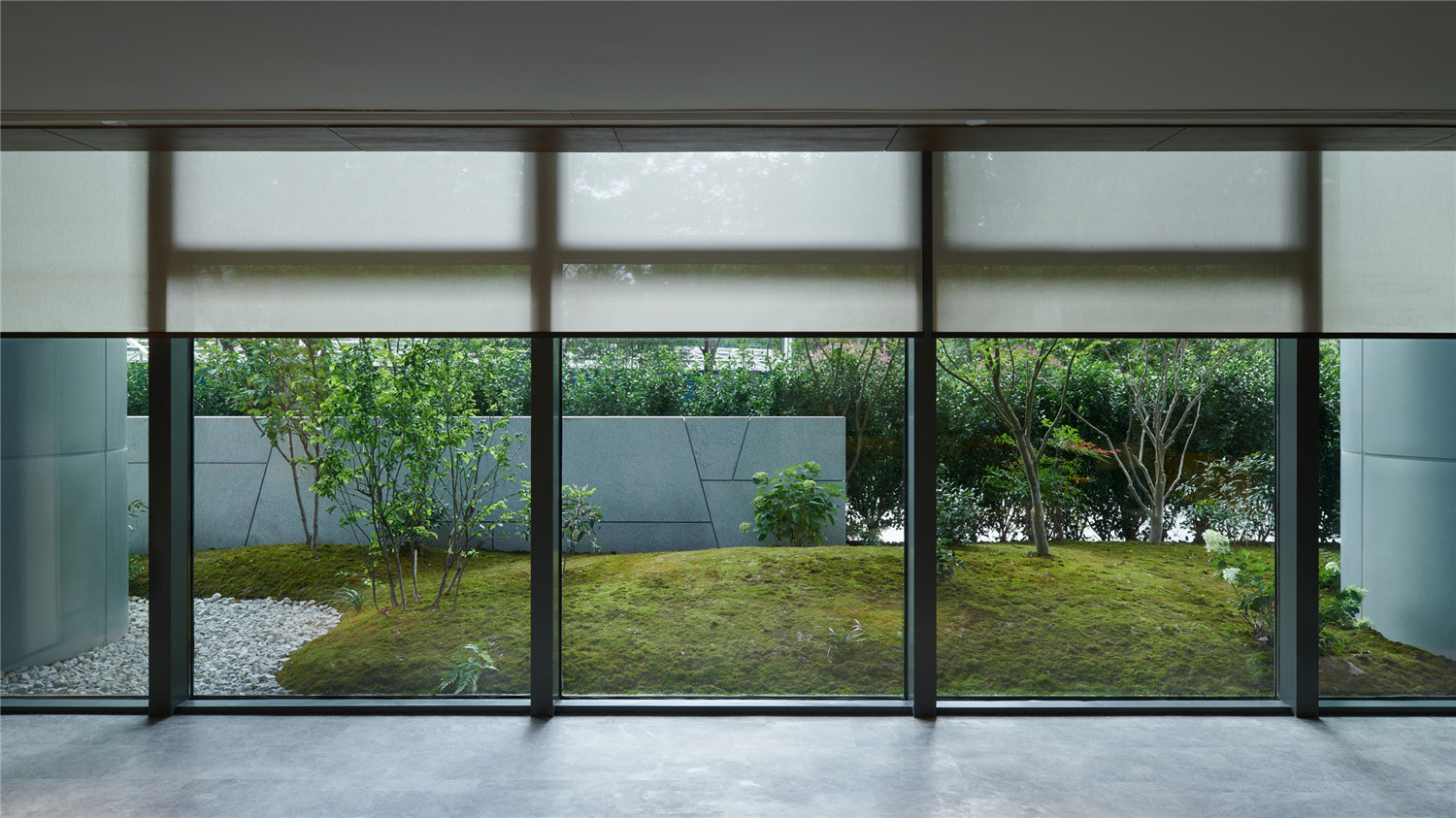
↑背景的綠籬進(jìn)行適當(dāng)隔離遮擋�����,增強(qiáng)私密性��。The hedgerow in the background creates obstruction, increasing privacy.
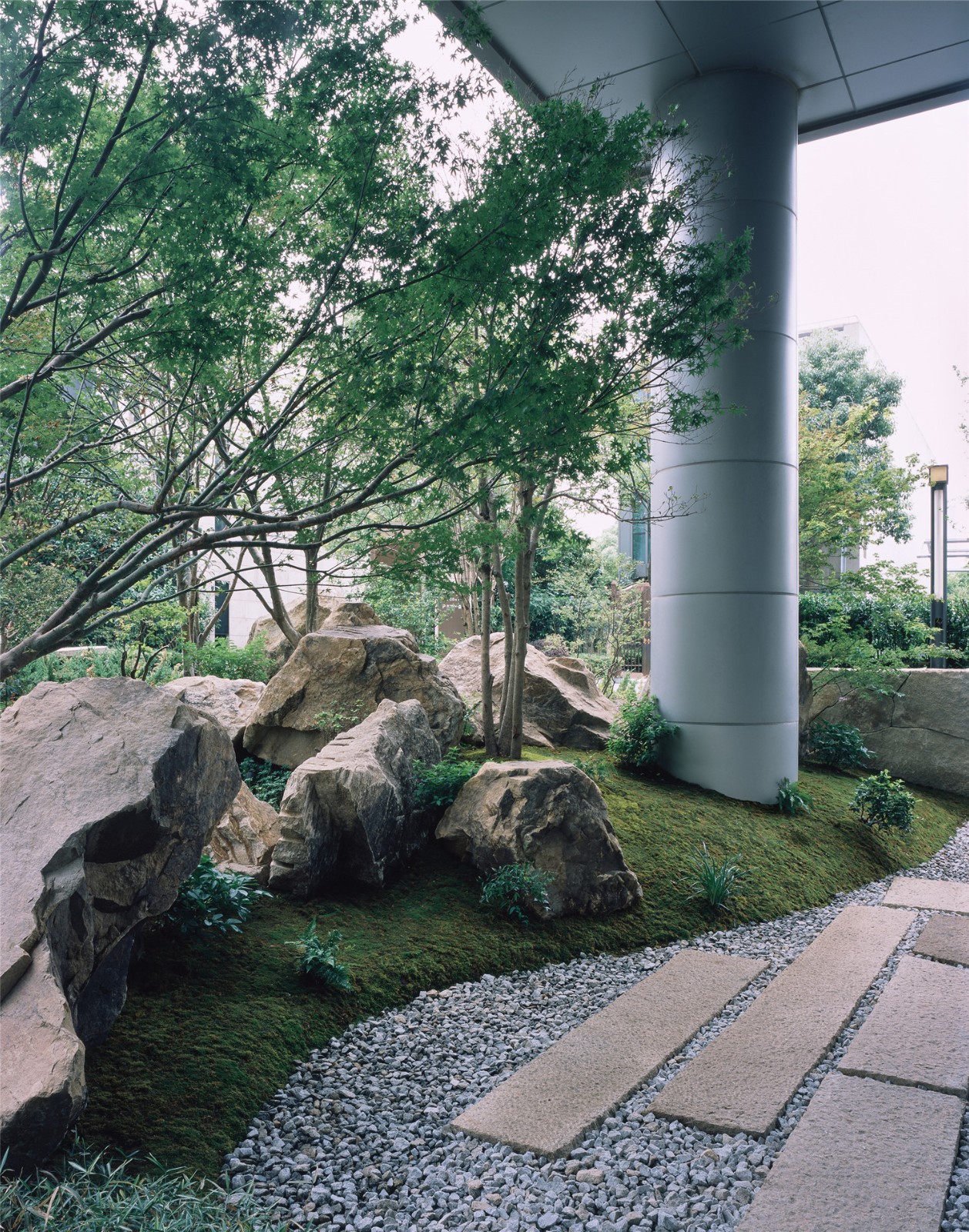
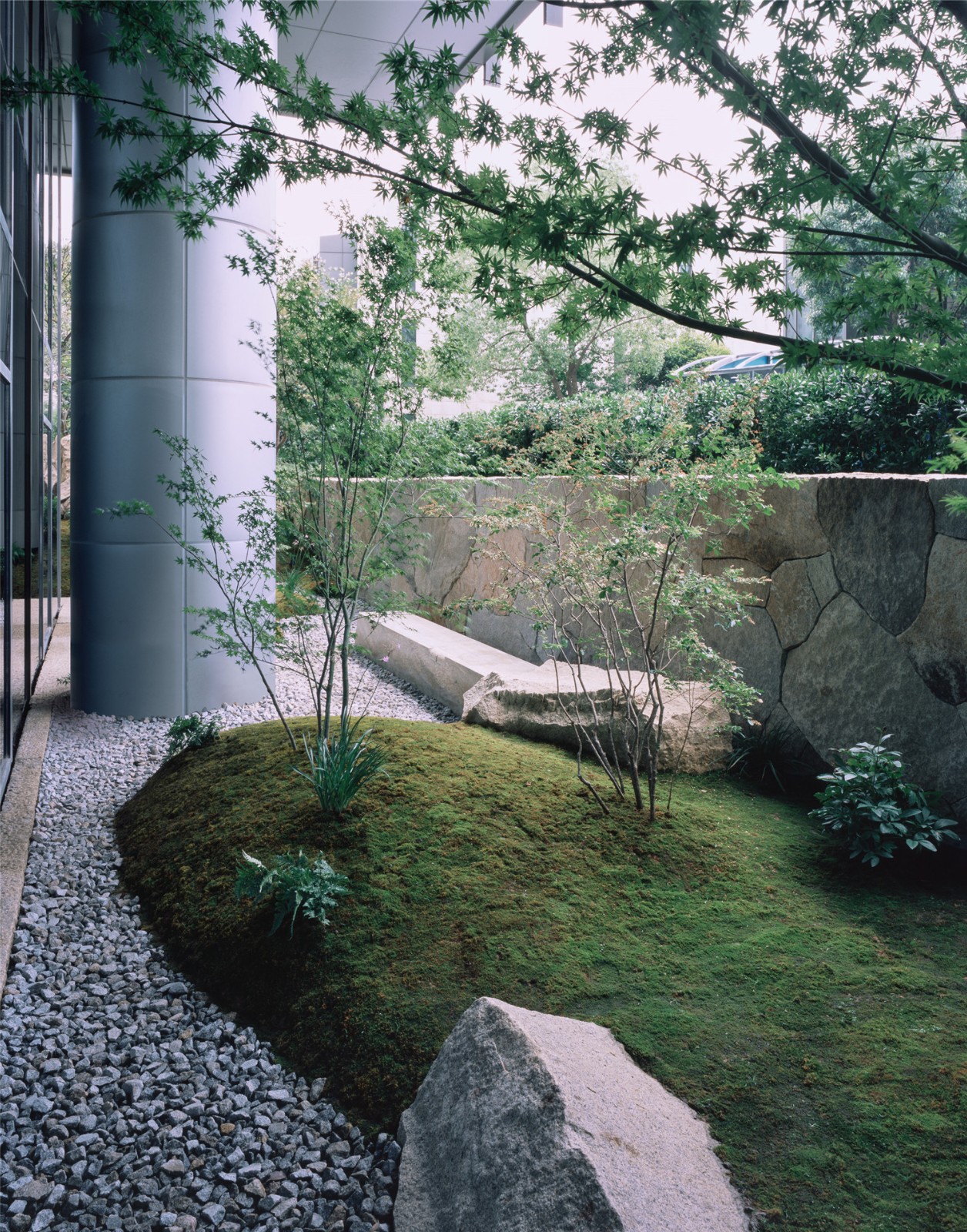
↑對(duì)黃銹石進(jìn)行雕塑化處理�。Statue-treating yellow-rust stone
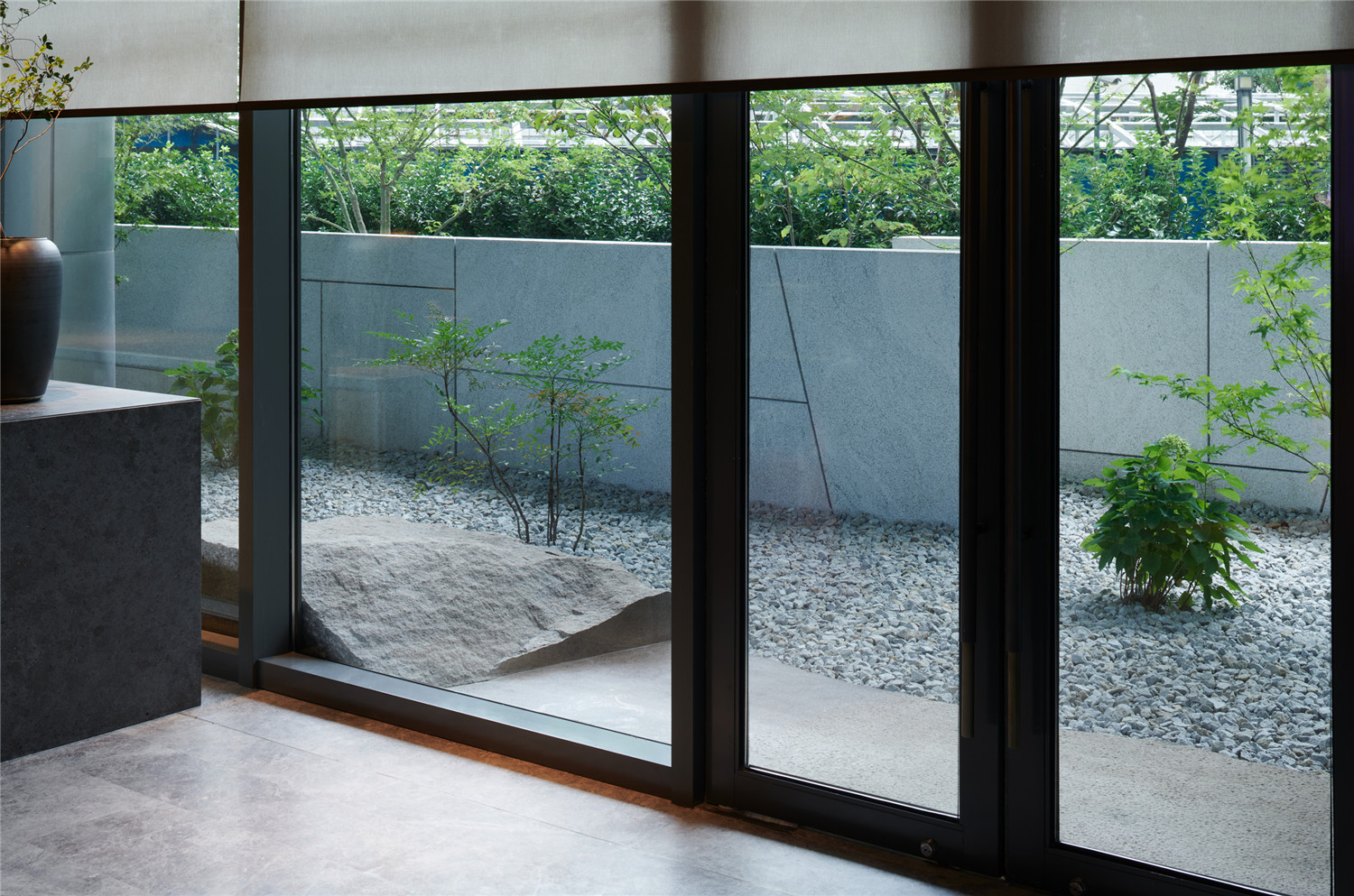
↑心照庭有兩處位置可站立靜觀��,靠近接待處的出口是其二�����,有自然面黃銹石石板可供駐足。The other viewing location is adjacent to the reception area. The platform consists of a natural surface yellow-rust stone.
三條石墻增加了空間的聯(lián)系性���,功能性上線性隔開(kāi)庭園與外部區(qū)域�����,增加私密性����,也可借后方植物的景�,令視覺(jué)感受更豐富。使用多品種的植物結(jié)合一高一矮的石墻�,保證空間橫向連續(xù)性的同時(shí)增加縱向空間景深。黃銹石亂拼石墻材質(zhì)���,呼應(yīng)著下方雕塑化處理石凳的自然皮面���,芝麻白石墻則采用人工感更強(qiáng)的幾何切割方式。
The three stone walls strengthen the connectivity between different segments of the garden. They increase privacy and divide the garden from the driveway on a functional level and also enrich visual sensation on a sensual level when combined with plants in the foreground. Using varieties of plants combined with different heights of stone walls, the verticality of the garden is highlighted while the horizontal continuity is preserved. The irregular nature of the yellow-rust stone stone wall echos with the natural surface of the statue-treated yellow-rust stone below, while the sesame-white stone wall uses more artificial techniques.
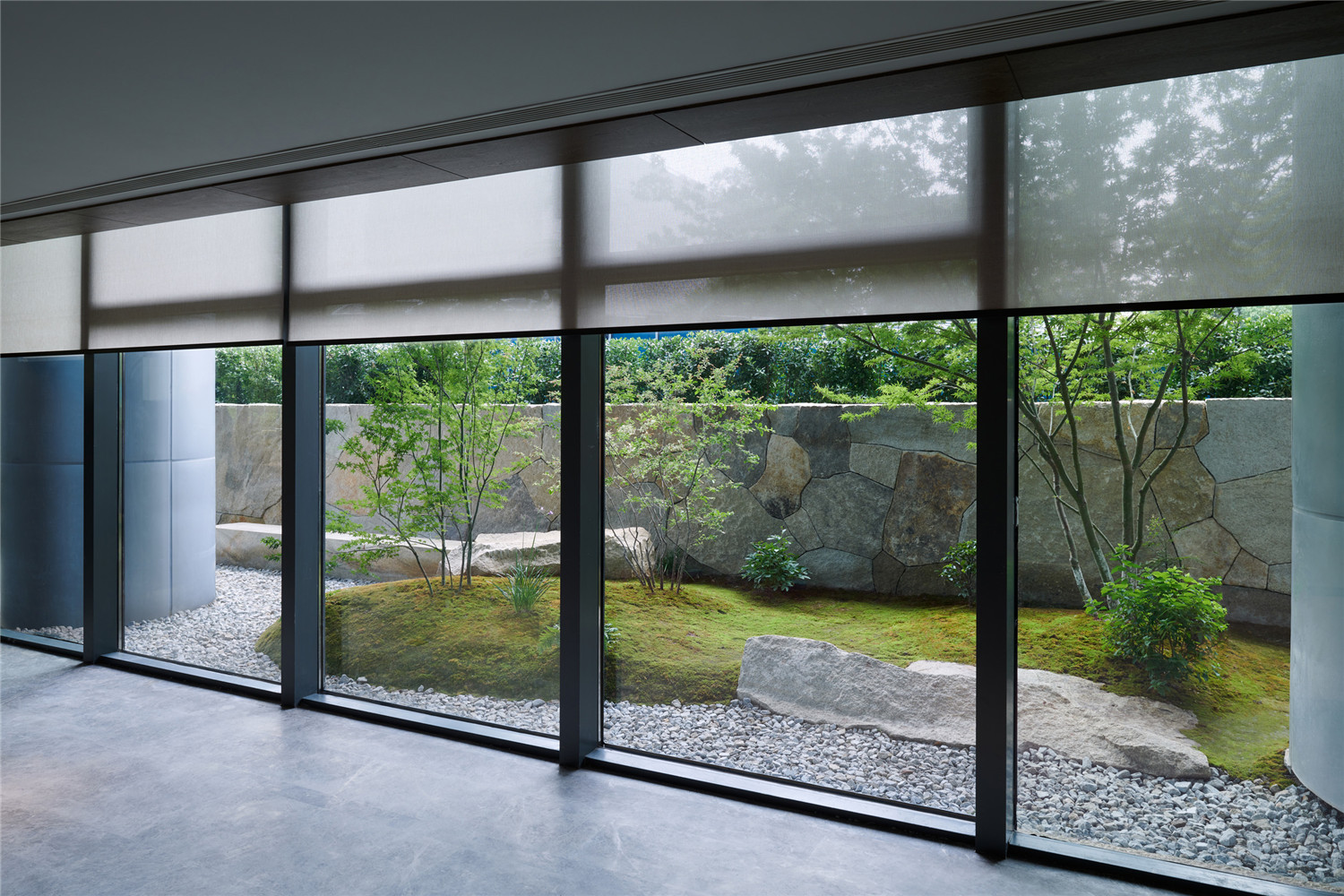
↑框景前適宜喝茶靜坐觀賞����,空間氛圍尤為安靜�����。It's perfect for tea-tasting in front of this framed view, the atmosphere of the tea room is especially quiet.

↑植物上采用雜木庭的設(shè)計(jì)氛圍。The vegetations selected are commonly found in a traditional Japanese woody garden.
設(shè)計(jì)師嘗試用石材�、技法去影響光線的進(jìn)入與反射。均勻的自然光經(jīng)過(guò)庭園后變換了質(zhì)感��,對(duì)應(yīng)著從偏暗的傳統(tǒng)茶室�����,到較為明亮的大堂����,再到明亮區(qū)域,更富層次與空間氛圍���。期待來(lái)到此地的人們���,在進(jìn)入后能轉(zhuǎn)換心情。
The designer uses stones and special techniques to influence the behavior of light. The texture of light changes as it passes through the garden, creating various ambiances in different areas. We hope those who visit the garden can shift their mood as they see fit by situating themselves in different parts of the garden.

版權(quán)聲明:本文由作者于景觀中國(guó)網(wǎng)發(fā)布�,僅代表作者觀點(diǎn),不代表景觀中國(guó)網(wǎng)立場(chǎng)����。如轉(zhuǎn)載���、鏈接、轉(zhuǎn)貼或以其它方式使用本稿����,需注明“文章來(lái)源:景觀中國(guó)網(wǎng)”。如有侵權(quán)����,請(qǐng)與發(fā)布者或我們聯(lián)系。
投稿郵箱:contact@landscape.cn
項(xiàng)目咨詢:18510568018(微信同號(hào))
 京公海網(wǎng)安備 110108000058號(hào)
京公海網(wǎng)安備 110108000058號(hào)

















